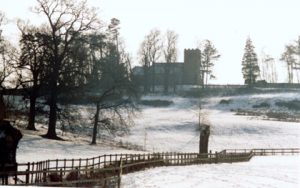
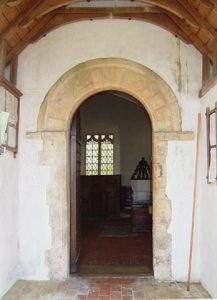
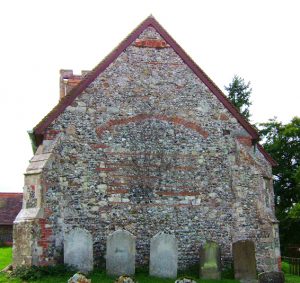
Viewed from outside, the east wall of the main aisle shows clear evidence of a window long since filled in with flint, brick, mortar and rubble. It appears glazed in a sketch of 1780.
The straight-headed windows of the nave and chancel are thought to be early sixteenth-century.
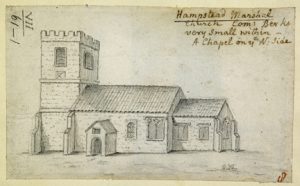
A major refurbishment took place in 1893, when the present porch was built, though the church is considered to have been relatively unspoilt by Victorian renovation.
More restoration in 1929 by Sir Charles Nicholson revealed a long-lost ten-foot square vault in the nave. It contained the remains of Balthazar Gerbier, the architect of the first Lord Craven's manor house, and Gideon Hicks, the earl's blacksmith.
The restoration work also found an Early English chancel arch, and the tombstone of Richard Smyth, who died in 1629 leaving money for the poor of the parish and for a sermon to be preached each Whitsun.
At this time the gold-lettering on the reredos (the Lord's Prayer, Creed and Ten Commandments) was painted over.
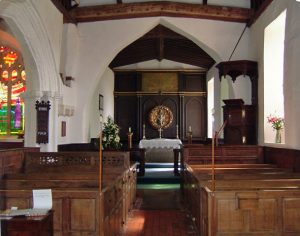
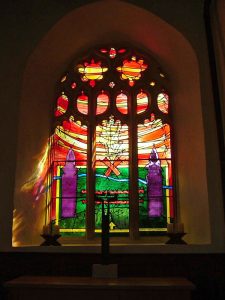
The most recent addition to the church's ornament is a stained glass window, commissioned to commemorate the millennium.
The artist was Mark Angus, whose work incorporated visual references to local topography and history.
The window was installed into the medieval stonework of the east-facing windows of the north aisle, where it is splendidly illuminated by the morning sun.